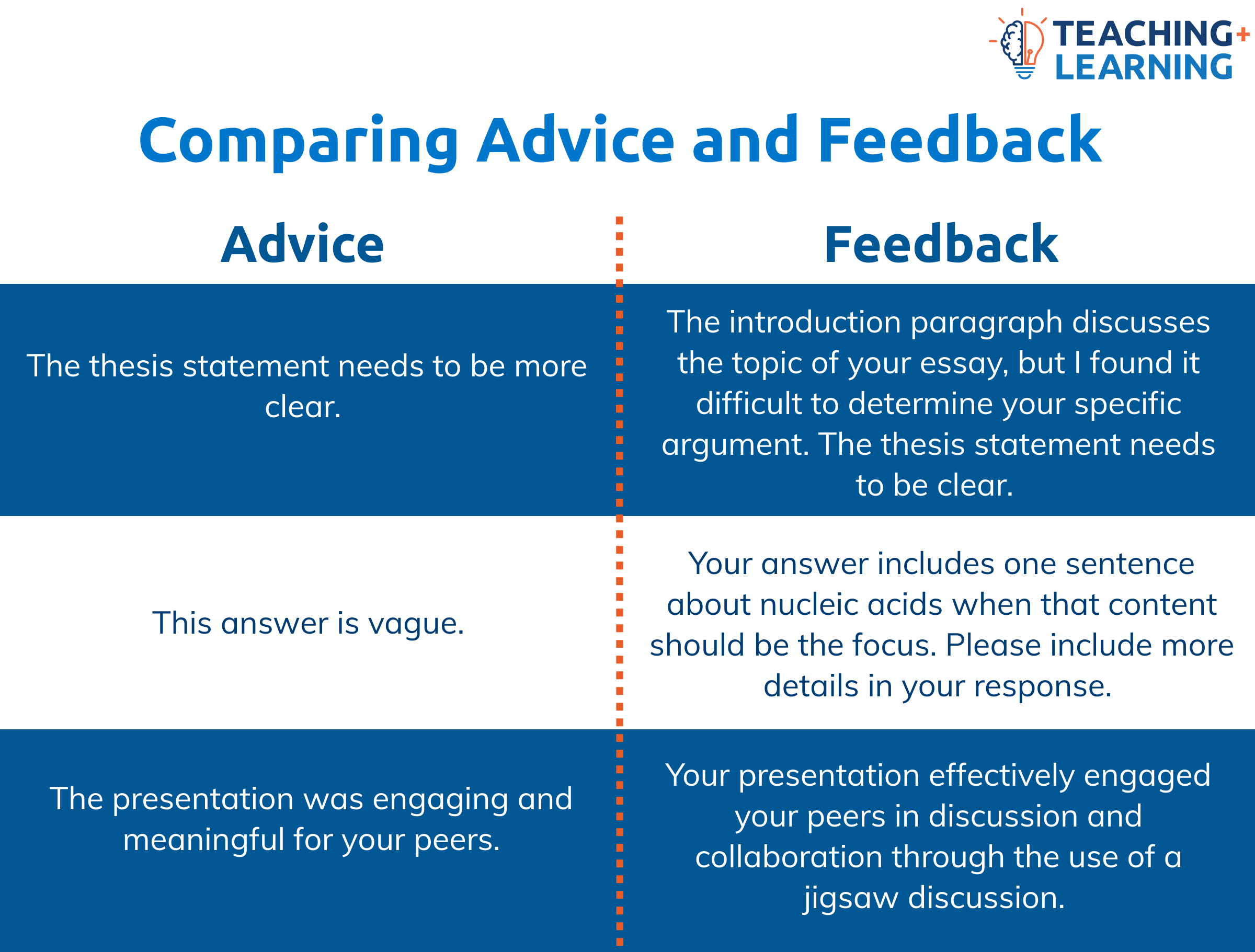Feedback
Definition
Feedback, in the context of assessment and evaluation, includes descriptive information offered back to the learner about their performance. Feedback can reinforce existing strengths, keep goal-directed behaviour on course, clarify the effects of behaviour, and increase recipients’ abilities to detect and remedy errors on their own
Section adapted from Receiving and giving effective feedback. Centre for Teaching Excellence, University of Waterloo.
Explanation
Providing effective feedback is a skill that takes practice to develop. It can be easy to fall into the habit of providing vague commentary on a learner’s work that does not provide insight on how the learner’s work can improve or what steps to take next ('Good work,' for example). As Wiggins (2014) suggests, it is easily mixed up with advice or praise.
Types of Feedback
-
Confirmatory feedback
Informs the student that they did what they were supposed to do. This type of feedback does not tell the student what she needs to improve, but it encourages the learner.
-
Evaluative feedback
Apprises the student of the accuracy of their performance or response but does not provide guidance on how to progress.
-
Remedial feedback
Directs students to find the correct answer but does not provide the correct answer.
-
Descriptive or analytic feedback
Provides the student with suggestions, directives, and information to help them improve their performance.
-
Peer-evaluation and self-evaluation
Help learners identify learning gaps and performance shortcomings in their own and peers’ work.
Adapted from Northern Illinois University Center for Innovative Teaching and Learning. (2020). Gagné’s nine events of instruction. In Instructional guide for university faculty and teaching assistants. Retrieved from https://www.niu.edu/citl/resources/guides/instructional-guide/ Attribution-NonCommercial-ShareAlike 4.0 International (CC BY-NC-SA 4.0)
Application
Learners should receive feedback on informal and formal assessments throughout the course so they can adapt their approaches and improve their work. Wiggins (2012) identifies seven characteristics of effective feedback that can serve as useful guidelines (pp. 13-16):
- Goal referenced: Effective feedback is directly related to a goal and explains if the learner is 'on track' to achieve that goal.
- Tangible and transparent: Learners need to be clear on what the specific goals of a task are as well as the indicators of success.
- Actionable: Effective feedback includes realistic steps that the individual can follow in order to improve their performance.
- User-friendly: Feedback should be communicated in a manner that can be understood by the person who is receiving it. Too much feedback can be ineffective, as can feedback that is overly complicated.
- Timely: Wiggins makes the note that feedback should be 'timely' though not necessarily 'immediate.' The learner should be given time to complete the task and process the experience. That said, feedback is most effective when it is provided sooner rather than later, so it can be applied to future learning.
- Ongoing: Frequent opportunities to receive and apply feedback are beneficial to learning.
- Consistent: Conflicting feedback causes confusion. In order to promote consistency in the feedback that is provided, all student work can be reviewed as a whole and detailed rubrics and guidelines can be used.
Example

Resources
Feedback and Formative Assessment Tools Module - by Queen’s University
References
Wiggins, G. (2012). Seven keys to effective feedback. Educational Leadership, 70(1). Retrieved from: http://uproxy.library.dc-uoit.ca/login?url=http://search.ebscohost.com/login.aspx?direct=true&db=rch&AN=82055856&scope=site
Wiggins, G. (2014). What feedback is and isn’t . https://grantwiggins.wordpress.com/2014/04/15/what-feedback-is-and-isnt/
